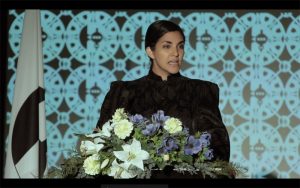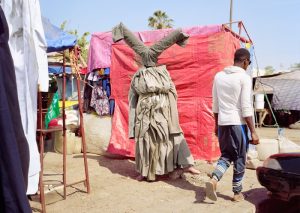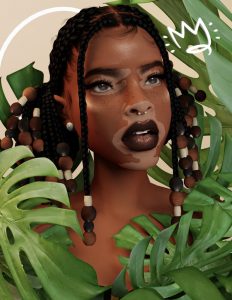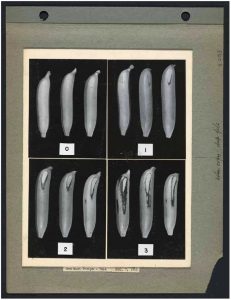When I went to the Museum of Photography in Antwerp to see the exhibitions about the Belgian Congo, little did i suspect that i’d find a Biennial of African Photography on the top floor of the building. Curated by Michket Krifa and Laura Serani, the 8th edition of Bamako Encounters was one of the best surprises of March for me. All i knew so far about photography in Africa was either the portfolios of some of the most famous photographers from South Africa (and South Africa only) or the work of European photoreporters commissioned by humanitarian organizations and magazines to document conflicts in various parts of the continent.
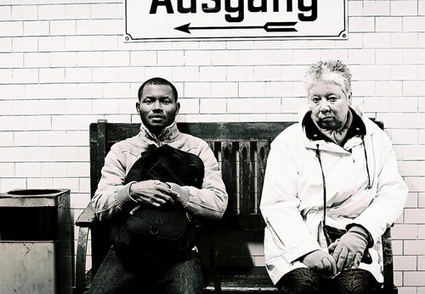 Abraham Onoriode Oghobase‘s Lost In Transit series, 2008
Abraham Onoriode Oghobase‘s Lost In Transit series, 2008
Not only are the works of high quality but the very theme of the biennale is right up my alley: Borders. Some of the photographers selected for the biennial embrace the theme very literally, others adopt a more metaphorical approach.
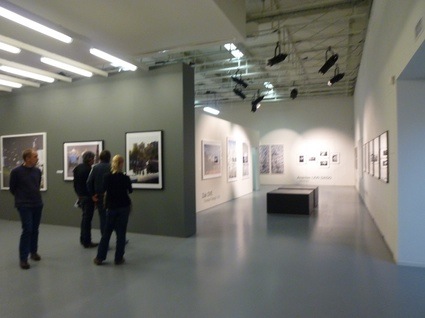 View of the exhibition space
View of the exhibition space
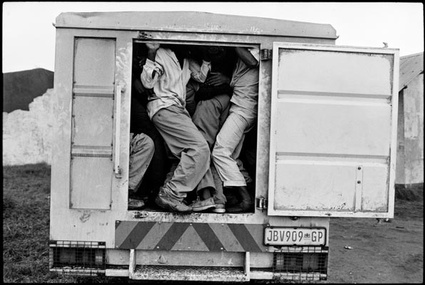 Jodi Bieber (South Africa), Illegal Immigration
Jodi Bieber (South Africa), Illegal Immigration
Borders is at heart of many issues in Africa. The borders that partition the continent were often established by European colonizers in an arbitrary way that bore little respect for customs, ethnicity or religion. The situation frequently led to conflicts within and between the various countries after they have gained independence. The word ‘borders’ accompanies also any conversation about the migration from Africa to Europe. Borders in this case are geographical of course but they are also made of intolerance, language, religion and, increasingly, politics. Finally there are the borders within a community that cast out those who are ‘different’ -homosexuals or albinos- from other people. Finally, it is painfully obvious that the theme of the biennial is relevant in the rest of the world as well.
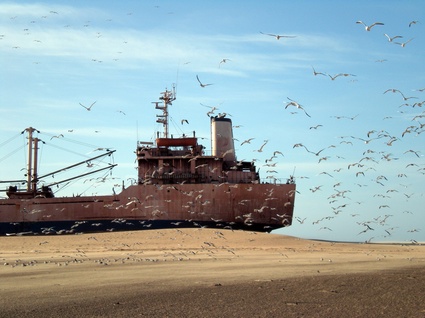 Zineb Sedira, Shipwreck
Zineb Sedira, Shipwreck
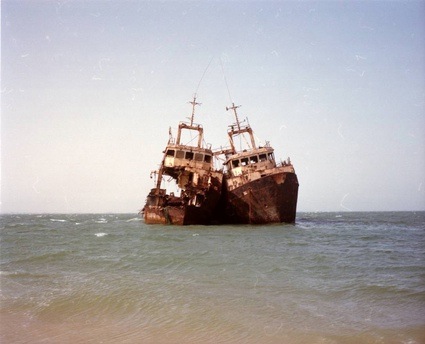 Zineb Sedira, The Lovers
Zineb Sedira, The Lovers
Seen through the lens of Zineb Sedira, the Mauritanian coastline balances on the borders that separates beauty from scars and decay, desolation from prosperity. Its beaches have become a scrap yard for the world’s shipping industry and a point of departure for sub-Saharan Africans hoping to find a better life in Europe.
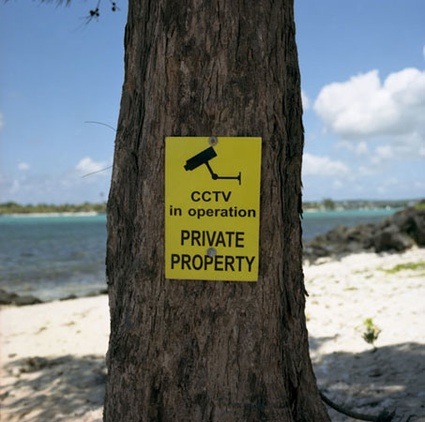
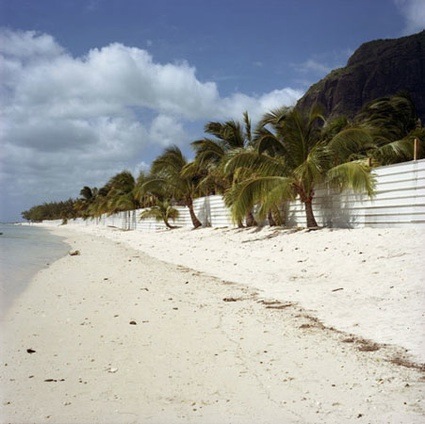 Yoyo Gonthier, Beach, 2008
Yoyo Gonthier, Beach, 2008
Yoyo Gonthier (Reunion Island) highlights the privatization of the coastline that lurks behind postcard pretty beaches in Mauritius. Fishermen can no longer access the coast to work and make a living. The local population can no longer enjoy the beaches. Luxury hotels guard their littoral with walls and security cameras. Billboards warn BAIN DANGEREUX, PRIVATE PROPERTY, FOR SALE.
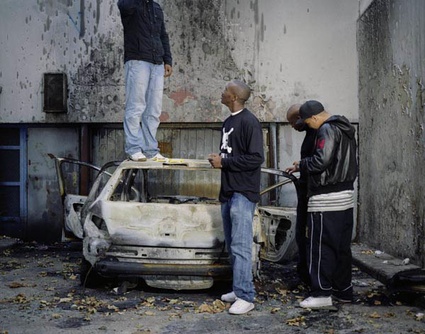 Mohammed Bourouizza, L’Impasse, 2007
Mohammed Bourouizza, L’Impasse, 2007
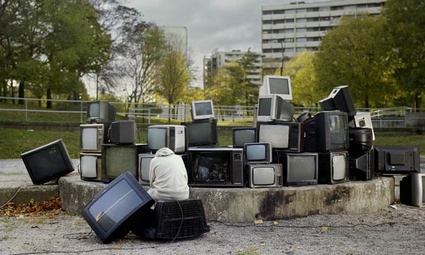 Mohammed Bourouizza, Le Reflet, 2007
Mohammed Bourouizza, Le Reflet, 2007
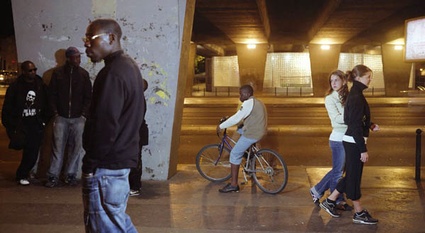 Mohammed Bourouizza, Périphérique, 2007
Mohammed Bourouizza, Périphérique, 2007
The Algerian Mohammed Bourouizza grew up in the banlieue of Paris. The images from his Périphéries series seem to be documentary. They correspond point by point to the clichés we might have of Paris suburbs from what we’ve seen on the press. Yet, you realize that you shouldn’t trust the clichés. The locations are scouted, the protagonists are carefully selected models and the lighting is the result of research and artistic strategy. The result is a series of staged depictions of the tensions and issues affecting daily life for young people living in the suburbs of France.
The series is on view at the gallery Yossi Milo in New York until June 12, 2010.
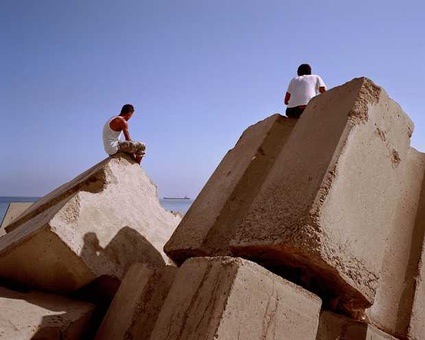 Kader Attia, Rochers Carres, 2009
Kader Attia, Rochers Carres, 2009
Kader Attia, grew up in the suburbs of Paris as well. In the series “Rochers Carrés” he shows the hopes and dreams on which migration is based.
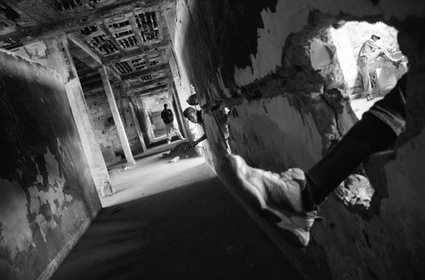
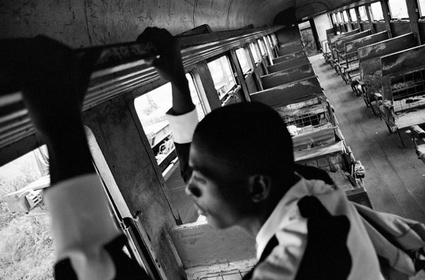
For the series Les Séquelles de la Guerre, Baudoin Mouanda (Democratic Republic of Congo) went back to the streets where he grew up to capture the consequences of civil wars that tore his country apart. Buildings, railway, schools don’t seem to have recovered yet. Every corner testifies to the violence.
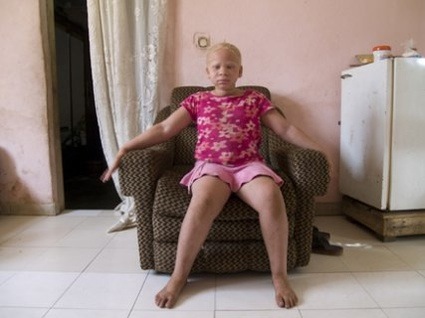 Seydou Camara, Bibiana, 2009
Seydou Camara, Bibiana, 2009
Perceived as neither black, nor white, African albinos live at the margin of the community. Because of their alleged supernatural abilities, albinos in some African countries have been attacked, murdered or mutilated, their eyes, skin, and other parts of their bodies are sometimes used for ritual purposes. Seydou Camara (Mali) shot intimate and sober portrays of albinos, in the hope that his images would somehow counter the old superstition. The photo series is called Bibiana, after a young girl from Tanzania whose leg was cut by traffickers of Albino organs.
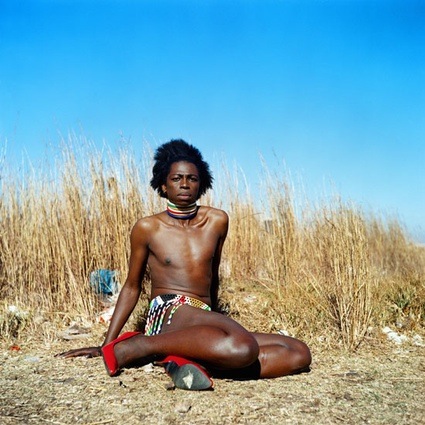 Zanele Muholi, Miss D’vine I, from the series, Miss D’vine, 2007
Zanele Muholi, Miss D’vine I, from the series, Miss D’vine, 2007
Zanele Muholi, a South-African photographer and activist, made whimsical and tender portraits of the transvestite “Miss D’vine”. With her images Muholi tries to break through the taboo that a different sexual orientation is “catastrophic”, unnatural or un-African.
Just for everybody’s pleasure, i’d like to mention that the Nollywood series of Pieter Hugo is part of the exhibition in Antwerp.
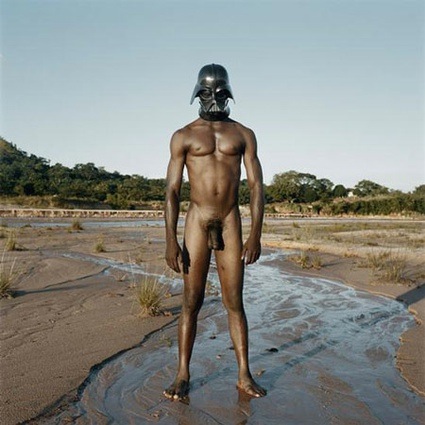
Borders – Bamako Encounters 2009 is on view at the FotoMuseum in Antwerp until May 16, 2010.
Previously: Images of the Belgian Congo, Pieter Hugo’s Nollywood, Guy Tillim: Avenue Patrice Lumumba, Home Lands – Land Marks: Contemporary Art from South Africa.


